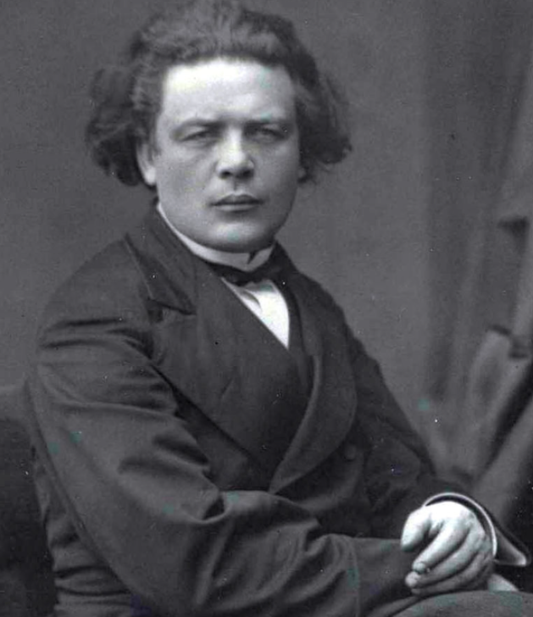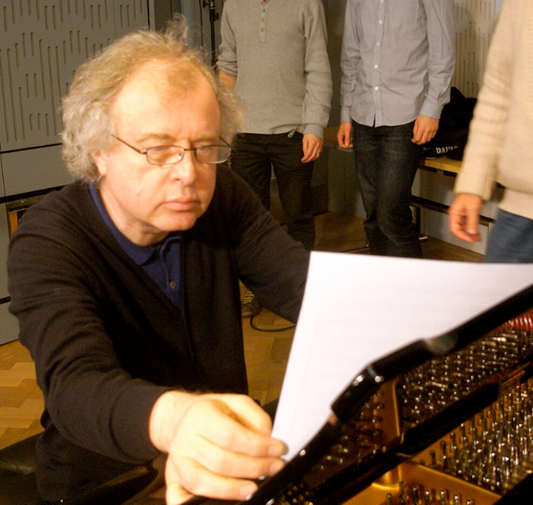Collection: CAMILLE SAINT-SAENS (1835-1921)
Charles-Camille Saint-Saëns (1835-1921) stands as one of the most formidable and versatile musical figures of 19th and early 20th century France. A child prodigy of almost Mozartian proportions, his exceptionally long and prolific career spanned the zenith of Romanticism through to the dawn of Modernism, leaving behind a vast catalogue of works characterized by elegant craftsmanship, melodic richness, and formal clarity.
Born in Paris, Saint-Saëns exhibited extraordinary musical talent from an incredibly young age. He possessed perfect pitch by two, began piano lessons at three, and composed his first piece at four. His public debut as a pianist occurred at age ten, where he famously offered to play any of Beethoven's 32 sonatas from memory as an encore. This prodigious intellect extended beyond music; he was also fascinated by astronomy, archaeology, mathematics, and literature, becoming a respected writer and essayist.
He entered the Paris Conservatoire at thirteen, studying organ with François Benoist and composition with Fromental Halévy. His organ playing became legendary, particularly during his nearly two-decade tenure (1857-1877) as organist at the prestigious Église de la Madeleine, where Franz Liszt himself declared him the world's greatest organist.
Saint-Saëns was a staunch advocate for French music. In 1871, following France's defeat in the Franco-Prussian War and concerned by the dominance of German music, he co-founded the Société Nationale de Musique with Romain Bussine. Its motto, "Ars Gallica" (French Art), aimed to promote the works of contemporary French composers like Fauré, Franck, and Duparc, significantly revitalizing the nation's musical landscape.
His compositional output was immense and diverse, encompassing nearly every genre. Among his most celebrated works are the dramatic opera Samson et Dalila (1877), with its exoticism and powerful vocal writing; the brilliantly orchestrated Symphony No. 3 "Organ" (1886), which masterfully integrates the organ into the symphonic texture; and the virtuosic Piano Concerto No. 2 in G minor (1868), renowned for its Bach-like opening and dazzling finale. Other enduring pieces include the Cello Concerto No. 1 in A minor (1872), the symphonic poem Danse Macabre (1874), and the elegant Introduction and Rondo Capriccioso for violin and orchestra (1863).
Perhaps ironically, his most universally recognized work today is Le Carnaval des Animaux (The Carnival of the Animals, 1886), a "Grand Zoological Fantasy." Fearing it would damage his reputation as a serious composer, Saint-Saëns forbade its public performance during his lifetime, save for "The Swan." Its witty parodies and charming characterizations have since made it a beloved classic.
Stylistically, Saint-Saëns was a classicist at heart, deeply influenced by Mozart, Haydn, and Mendelssohn. While living through the Romantic era, his music prioritized clarity of form, lyrical grace, and brilliant orchestration over the overt emotionalism of many contemporaries. This sometimes led to criticism that his work was too polished or lacked profound depth, but his technical mastery and melodic gift were undeniable.
In his later years, Saint-Saëns became increasingly conservative, finding himself out of step with the Impressionism of Debussy and Ravel, and the burgeoning avant-garde. He continued to compose prolifically, touring extensively as a pianist and conductor well into his eighties, a living link to a bygone musical era. He died in Algiers in 1921, leaving a legacy as a pivotal figure in French music, a champion of its traditions, and a composer whose finest works remain firmly embedded in the concert repertoire, admired for their enduring elegance and consummate skill.





